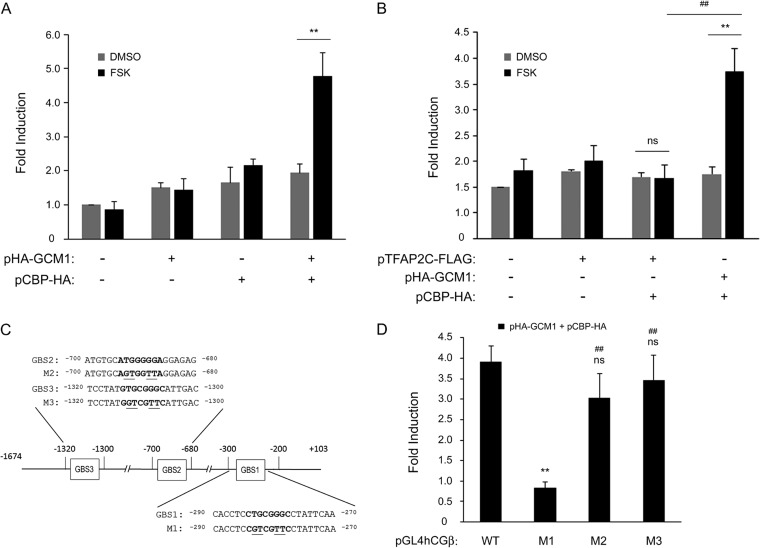FIG 4.
Regulation of hCGβ promoter activity by GCM1. (A) GCM1 and CBP collaborate to regulate hCGβ promoter activity in response to cAMP stimulation. HepG2 cells were transfected with pGL4hCGβ, pHA-GCM1, and pCBP-HA for 24 h. Cells were mock treated (dimethyl sulfoxide [DMSO]) or treated with 50 μM FSK for an additional 24 h before being harvested for luciferase assays. Mean values and standard deviations obtained from four independent experiments are presented. (B) TFAP2C is not involved in cAMP-induced hCGβ promoter activation. Different combinations of pGL4hCGβ, pHA-GCM1, pTFAP2C-FLAG, and pCBP-HA were transfected into HepG2 cells for hCGβ promoter activity analysis as described above for panel A. ** and ##, P < 0.01. (C) Schematic representation of potential GCM1-binding sites in the hCGβ promoter. Sequences of the potential GBSs are listed in boldface type. Note that the nucleotide residues essential for GCM1 binding in each GBS were changed by site-directed mutagenesis and are underlined. (D) Identification of a GCM1-responsive element in the hCGβ promoter. HepG2 cells were transfected with pHA-GCM1 and pCBP-HA plus wild-type or mutant pGL4hCGβ (M1 to M3) for 24 h. Cells were mock treated or treated with 50 μM FSK for an additional 24 h before being harvested for luciferase assays. Mean values and standard deviations obtained from three independent experiments are presented. **, P < 0.01 (compared with the wild type); ns, not significant (compared with the wild type); ##, P < 0.01 (compared with M1).

